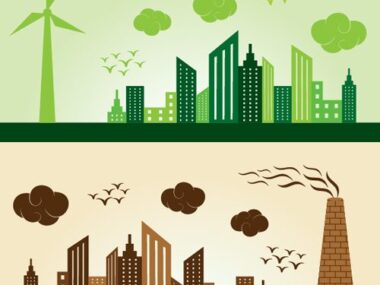Indirect Mineral Dust Exposure May Raise Risk of Sarcoidosis in Children
Written by |

Children living in the same household with adults who work in mineral dust-releasing jobs may have an increased risk of developing sarcoidosis, according to a small study.
The findings suggest that indirect exposure to potentially harmful minerals — and specifically, inhaled mineral particles — through co-habitation with adults working such jobs is an important environmental risk factor for sarcoidosis.
Together with previous studies in adults, the new data highlight the potential risks of such exposure, either directly for adults or indirectly for children through their co-habitants.
“Our study is the first one supporting the fact that the adult co-residents’ occupational exposure (especially [to] crystalline silica, metal and talcum — the toxicity of which has already been put forward) could play a … role in the [development] of pediatrics sarcoidosis,” in contrast to direct exposures during childhood, the researchers wrote.
The study, which compared direct and indirect exposures between children with sarcoidosis and two control groups, also pointed to a potential link between wood or fossil energy heating and pediatric sarcoidosis.
Larger studies are needed to confirm these findings, the researchers said.
The study, “Exposure to inorganic particles in paediatric sarcoidosis: the PEDIASARC study,” was published as a brief communication in the journal Thorax.
Sarcoidosis is a highly variable inflammatory disease that can lead to the formation of small clumps of immune cells, called granulomas, in virtually any organ in the body. Most commonly, such granulomas form in the lungs.
The disease is thought to be caused by a combination of genetic and environmental factors — of which inhaled exposure to certain metals and minerals has been shown to contribute to sarcoidosis in adults.
However, there is limited evidence on the role of these environmental factors in pediatric sarcoidosis, a rare form of the disease that has only been reported in Danish, Afro-Caribbean, and Afro-American populations.
To learn more, researchers in France conducted a study, called PEDIASARC, that analyzed direct and indirect exposure to mineral particles in pediatric-onset sarcoidosis. Altogether, the study involved 36 people with pediatric-onset sarcoidosis and 36 age- and sex-matched healthy people who served as controls.
Most of the sarcoidosis patients (64%) had Sub-Saharan and Afro-Caribbean origins, while all of the healthy controls were from Europe.
To have a control group that more closely resembled the pediatric sarcoidosis group in terms of geographic origin, socioeconomic, and genetic background, the researchers also included 21 people with sickle cell disease (SCD), a rare blood condition. All had Sub-Saharan Africa and Afro-Caribbean origins.
All participants or their adult representatives completed an environmental questionnaire regarding direct or indirect exposures, particularly to silica — a common mineral found in sand, clay, and many types of rock — talc, wood dust, mold, pollution, and metal dust.
The researchers assessed direct exposures from birth to age at sarcoidosis onset, as well as indirect exposures through adult co-residents’ occupational and non-work-related exposures. Previous and current in-house exposures also were examined. Each exposure category was transformed into a score, with each exposure corresponding to one point.
All participants lived with about three people.
Results showed that direct exposure scores did not differ between the three groups, except for household powders inhalation. That was significantly more common in sarcoidosis patients relative to healthy controls (14% vs. 0%; 5% in SCD patients).
Notably, indirect exposure to mineral particles through co-residents’ occupations was significantly higher in the pediatric sarcoidosis group than in both control groups.
Occupations more commonly reported in the sarcoidosis group relative to the other groups included those related to construction, the metal industry, and to exposure to metal dust, talc, abrasive reagents (silica), and scouring products.
“This study supports a link between mineral environmental exposure due to adult coresident occupations and paediatric sarcoidosis,” the researchers wrote.
People with pediatric-onset sarcoidosis also showed significantly higher scores related to previous and current in-house exposures compared with healthy individuals, but not with SCD patients.
However, both previous and current wood, gas, butane, coal, or fuel oil heating were more frequently reported in the sarcoidosis group (58–69%) than in both healthy (36–44%) and SCD groups (19–48%).
“This study supports the hypothesis that mineral environmental risk factors, through occupational exposure to inorganic particles of the patients’ co-residents are linked to pediatric [sarcoidosis],” the researchers wrote.
“Hazardous occupations were those releasing a lot of dust, especially in construction,” and this is consistent with previous findings in adults, the team added.
The data also suggested that heating with wood or fossil energy also may increase the risk of pediatric sarcoidosis.







